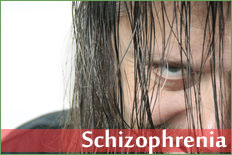Health Centers > Mental Health Center > Psychiatric Disorders > Mood disorders
Mood disorders (for professionals)
Mood disorders (for professionals)
Mood disorders affect about 10% of the population. Everyone experiences "highs" and "lows" in life, but people with mood disorders experience them with greater intensity and for longer periods of time than most people.
Treatment-Resistant Bipolar Disorder
- Antidepressant and Antimanic Medications
- Depression-Focused Psychotherapies
- Psychodynamic Psychotherapies
- Combined Medication and Psychotherapy
- Electroconvulsive Therapy
- Light Therapy
- Treatment-Resistant Mood Disorders
- Treatment-Resistant Bipolar Disorder
- Treatment of Mood Disorders in the Medically Ill Patient
- Strategies and Tactics in the Treatment of Depression
Depression is the most common mood disorder; a person with depression feels "very low." Symptoms may include: feelings of hopelessness, changes in eating patterns, disturbed sleep, constant tiredness, an inability to have fun, and thoughts of death or suicide.
Numbers of Americans Affected by Mental Illness
- One in four adults-approximately 61.5 million Americans-experiences mental illness in a given year. One in 17-about 13.6 million-live with a serious mental illness such as schizophrenia, major depression or bipolar disorder.
- Approximately 20 percent of youth ages 13 to 18 experience severe mental disorders in a given year. For ages 8 to 15, the estimate is 13 percent.
- Approximately 1.1 percent of American adults - about 2.4 million people - live with schizophrenia.
- Approximately 2.6 percent of American adults-6.1 million people-live with bipolar disorder.
- Approximately 6.7 percent of American adults-about 14.8 million people-live with major depression.
- Approximately 18.1 percent of American adults-about 42 million people-live with anxiety disorders, such as panic disorder, obsessive-compulsive disorder (OCD), posttraumatic stress disorder (PTSD), generalized anxiety disorder and phobias.
- About 9.2 million adults have co-occurring mental health and addiction disorders.
- Approximately 26 percent of homeless adults staying in shelters live with serious mental illness and an estimated 46 percent live with severe mental illness and/or substance use disorders.
- Approximately 20 percent of state prisoners and 21 percent of local jail prisoners have "a recent history" of a mental health condition.
- Seventy percent of youth in juvenile justice systems have at least one mental health condition and at least 20 percent live with a severe mental illness.
Antidepressant and Antimanic Medications
- Introduction
- Diagnostic Indications and Contraindications
- Antidepressant Medications: Pharmacological Properties and Evidence for Acute-Phase Efficacy
- Antimanic Medications: Pharmacological Properties and Evidence for Acute-Phase Efficacy
- Continuation- and Maintenance-Phase Efficacy
- Pharmacological Effects Responsible for Common Side Effects of Antidepressant and Antimanic Medications
- Medication Treatment of Depression: Applications and Procedures
- Case Examples
Schizophrenia
A common and serious mental disorder characterized by loss of contact with reality (psychosis), hallucinations (false perceptions), delusions (false beliefs), abnormal thinking
Psychotic Disorders
Psychotic disorders are a collection of disorders in which psychosis ...
Mood disorders
Mood disorders are among the most common diagnoses in psychiatry ...
Personality Disorders
The majority of people with a personality disorder never come ...
Disorders of Childhood and Adolescence
Many disorders seen in adults can occur in children.
Substance-Related Disorders
Substance abuse is as common as it is costly to society...
Cognitive Disorders
The cognitive disorders are delirium, dementia, and amnestic disorders ...
Miscellaneous Disorders
Miscellaneous disorders does not refer to any official...
A government commissioned survey of more than 61,000 patients suggests 2.4 percent of the world's population may have some form of the disease, which is marked by unexplained shifts in mood, energy and activity that can affect relationships and job performance.
Depression-Focused Psychotherapies
Kathleen Merikangas of the National Institute of Mental Health in Bethesda, Maryland and colleagues wrote in the Archives of General Psychiatry, "It's very important that we understand the scope and magnitude of this disorder so that we can plan appropriate treatments, facilitate recognition of diseases, and identify people at risk so we can bring them into treatment ... Bipolar disorder is responsible for the loss of more disability-adjusted life-years than all forms of cancer or major neurologic conditions such as epilepsy and Alzheimer's disease, primarily because of its early onset and chronicity across the life span." The team conducted surveys of adults in the United States, Mexico, Brazil, Colombia, Bulgaria, Romania, China, India, Japan, Lebanon and New Zealand. The United States has the highest lifetime rate of bipolar disorder at 4.4%, and India the lowest, with 0.1%. Japan had a lifetime prevalence of 0.7%. Colombia, a lower-income nation, also deviated from the trend with a relatively high prevalence of 2.6%.
Psychodynamic Psychotherapies
Results showed that less than half of those with bipolar disorder or manic-depressive psychosis received mental health treatment during their lifetimes. In low-income countries, only 25.2 percent of bipolar patients said they had any contact with the mental health system. Three fourths of those with bipolar disorder also met the diagnostic criteria for at least one other disorder, with anxiety disorders being the most common concomitant illness. Over 50% people said their symptoms started in adolescence, underscoring the need for early detection and treatment, the researchers said.
Mood Disorders
(patient information)
- Unipolar disorders
- Unipolar disorders
- Major Depressive Disorder
- Dysthymic disorder
- Bipolar
- Bipolar I disorder
- Bipolar II disorder
- Cyclothymic disorder
- Mood Episodes
- Major Depressive Episode
- Manic Episode
- Mixed Episode
- Hypomanic Episode
- Etiologic
- Substance-induced mood disorder
- Mood disorder due to general medical condition
Mood disorders are among the most common diagnoses in psychiatry. Mood is a persistent emotional state (as differentiated from affect, which is the external display of feelings). There are three major categories of mood disorders according to the Diagnostic and Statistical Manual of Mental Disorders, 4th edition: unipolar mood disorders (major depressive disorder, dysthymic disorder), bipolar mood disorders (bipolar I disorder, bipolar II disorder, and cyclothymic disorder), and mood disorders having a known etiology (substance-induced mood disorder and mood disorder due to a general medical condition) (Table 2-1).
The best available evidence suggests that mood disorders lie on a continuum with normal mood. Although mania and depression are often viewed as opposite ends of the mood spectrum, they can occur simultaneously in a single individual within a brief period, giving rise to the concept of mixed mood states.
Mood disorders are characterized by a disturbance in the regulation of mood, behavior, and affect. Mood disorders are subdivided into (1) depressive disorders, (2) bipolar disorders, and (3) depression in association with medical illness or alcohol and substance abuse. Depressive disorders are differentiated from bipolar disorders by the absence of a manic or hypomanic episode. The relationship between pure depressive syndromes and bipolar disorders is not well understood; depression is more frequent in families of bipolar individuals, but the reverse is not true. In the Global Burden of Disease Study conducted by the World Health Organization, unipolar major depression ranked fourth among all diseases in terms of disability-adjusted life years and was projected to rank second by year 2020. In the United States, lost productivity directly related to depression has been estimated at $44 billion per year.
References
National Institutes of Health, National Institute of Mental Health. (n.d.). Statistics: Any Disorder Among Adults. Retrieved March 5, 2013, from http://www.nimh.nih.gov/statistics/1ANYDIS_ADULT.shtml
National Institutes of Health, National Institute of Mental Health. (n.d.). Any Disorder Among Children. Retrieved March 5, 2013, from http://www.nimh.nih.gov/statistics/1ANYDIS_CHILD.shtml
National Institutes of Health, National Institute of Mental Health. (n.d.) The Numbers Count: Mental Disorders in America. Retrieved March 5, 2013, from http://www.nimh.nih.gov/health/publications/the-numbers-count-mental-disorders-in-america/index.shtml
Prevalence numbers were calculated using NIMH percentages (cited) and 2010 Census data. Census data is available at: United States Census Bureau. (revised 2011). "USA [State & County QuickFacts]." Retrieved March 5, 2013, from http://quickfacts.census.gov/qfd/states/00000.html
Daily Mental News
Post-traumatic stress disorder seen in many adults living with congenital heart disease
A single-center study from The Children’s Hospital of Philadelphia (CHOP) found that as many as one in five adult patients…


